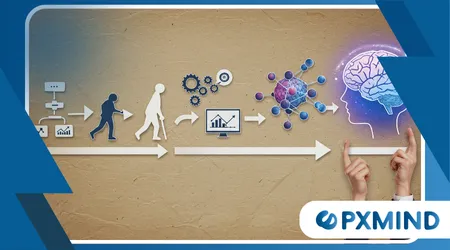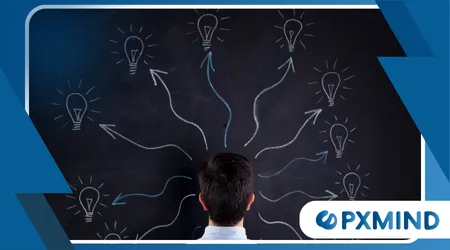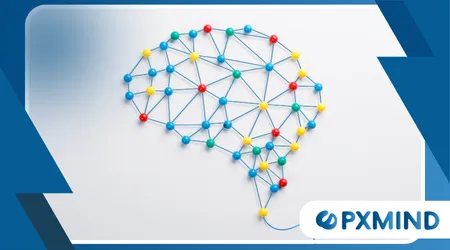How the New Brain Map Is Transforming Our Understanding of Decision-Making

New Brain Map Is Transforming Our Understanding. For decades, we’ve pictured the brain as a static, compartmentalized organ.
Anúncios
The prevailing belief was that each region had a single, dedicated function.
This simplistic view, however, is a relic of the past, as a New Brain Map Is Transforming Our Understanding of how we make choices.
This revolutionary atlas reveals a dynamic, interconnected neural landscape, challenging long-held theories about our cognitive processes.
The implications for understanding human behavior are profound and far-reaching.
The Brain’s Dynamic Operating System
The brain is not a collection of independent silos; it’s a bustling metropolis of neural networks.
Decisions, from the mundane to the monumental, are not born in a single command center.
Instead, they emerge from a constant, intricate dance of synchronized activity across multiple brain regions.
This complex interplay, highlighted by the New Brain Map Is Transforming Our Understanding, reveals a highly integrated operating system.
We are uncovering a system of constant negotiation. Information flows seamlessly between areas previously thought to be isolated.
The prefrontal cortex, long considered the seat of rational thought, is not an isolated CEO.
It is a busy air traffic controller, coordinating input from a vast array of subcortical regions.
This new perspective fundamentally shifts our understanding of agency and control.
Beyond Localization: The Power of Neural Circuits
Traditional neuroscience often focused on what happens “in” a specific area. Now, the spotlight is on “how” these areas talk to each other.
Researchers are identifying specific neural circuits, or “decision pathways,” that span different brain regions.
These pathways are not rigid; they are fluid and adaptable, changing based on context.
Think of it like a symphony. We used to focus on what each instrument, or brain region, played individually.
Read more: The Link Between Gut Health and Brain Function
The new map shows us the melody that emerges when the entire orchestra plays together. This shift in focus is critical.
It explains why a seemingly simple choice, like buying coffee, can be influenced by memory, emotion, and future goals, all orchestrated by these complex circuits.
Emotion and Logic: An Inseparable Pair
One of the most exciting revelations is the deep integration of emotion in decision-making. The outdated model suggested a tug-of-war between a rational brain and an emotional one.
The New Brain Map Is Transforming Our Understanding by showing these two systems are inextricably linked.
The amygdala, for instance, which processes fear and reward, is in constant communication with the prefrontal cortex.
See how interesting: 7 Mindful Practices to Start Your Day Right
This isn’t a battle for dominance; it’s a cooperative partnership. Emotion isn’t a flaw in our reasoning; it’s an essential data point, a rapid-fire calculation of potential outcomes.
This new understanding helps us appreciate why we often make decisions based on gut feelings.

A New Look at Impulsivity and Control
The New Brain Map Is Transforming Our Understanding of impulsive behavior. The old view saw it as a simple lack of willpower or control.
Now, we see it as a breakdown in the communication between key neural circuits. It’s often not a failure of a single brain region but a malfunction in the network itself.
Consider someone who habitually overeats. This isn’t just about a lack of discipline.
Check this out: The Best Brain Foods for Better Learningtr
It might involve a disconnect between the brain’s reward centers, which crave instant gratification, and the inhibitory control circuits in the prefrontal cortex.
This new framework allows for more nuanced and effective therapeutic interventions, moving beyond simple moral judgments.
Real-World Implications and a New Table of Understanding
The practical applications of this research are immense. They are already reshaping fields from economics to mental health.
The New Brain Map Is Transforming Our Understanding of everything from consumer behavior to addiction. Here’s a brief look at some of the key paradigm shifts.
| Old Paradigm | New Paradigm |
| Brain regions have single, fixed functions. | The brain operates as a network of dynamic circuits. |
| Emotions hinder logical decision-making. | Emotions are an integrated part of rational thought. |
| Impulsivity is a failure of willpower. | Impulsivity is a circuit-level communication breakdown. |
| Cognitive processes are purely rational and isolated. | Cognition is a complex interplay of reason, emotion, and memory. |
This table, informed by studies like the Human Connectome Project, illustrates the dramatic shift in perspective.
A 2024 study published in Nature Neuroscience found that a person’s risk tolerance could be predicted by the functional connectivity between their amygdala and the ventromedial prefrontal cortex, further emphasizing the interconnected nature of our decision-making.
The Future of a Humanized Science
This new era of brain mapping promises to humanize neuroscience. It moves away from the cold, mechanical view of the brain as a machine.
Instead, it offers a more holistic and compassionate perspective on human behavior.
The New Brain Map Is Transforming Our Understanding by revealing the beautiful complexity of the human mind.
Consider this: Is it not a marvel of biological engineering that we can weigh a lifetime of experience in a split second? This complex process, once a mystery, is becoming a mapable reality.
The New Brain Map Is Transforming Our Understanding not just of how we choose, but of what it means to be human.

New Brain Map Is Transforming Our Understanding
The new brain map is more than a scientific tool; it is a revolution in how we see ourselves.
By moving beyond rigid localization and embracing the interconnected nature of neural circuits, we are gaining unprecedented insights into the very nature of choice.
The journey has just begun, and the questions it raises are as exciting as the answers it provides.
This paradigm shift will continue to reshape our understanding of ourselves, one decision at a time.
FAQ
1. What is the “New Brain Map” and how is it different?
The new brain map refers to advanced neuroimaging techniques that go beyond mapping individual brain regions to instead chart the dynamic connections and functional pathways between them.
It differs from old maps by focusing on the “connectome” – the complete network of neural connections – rather than isolated areas.
2. How does this new understanding impact mental health treatment?
By identifying specific circuits associated with disorders like depression or anxiety, doctors can develop more targeted and personalized therapies.
This includes approaches that aim to restore communication within these specific neural networks, rather than simply treating isolated symptoms.
3. Does this new map mean we have no free will?
The new map doesn’t eliminate free will; it provides a more detailed explanation of its biological basis.
It suggests that our choices are the result of incredibly complex and dynamic neural processes, not a simple, single-point decision.
This understanding can help us navigate and understand our own choices better.
4. How is this research conducted?
This research is primarily conducted using advanced neuroimaging technologies like fMRI (functional magnetic resonance imaging) and Diffusion Tensor Imaging (DTI).
These tools allow scientists to see not only which parts of the brain are active but also how they are communicating with each other in real-time during various tasks.
++ Complete brain activity map revealed for the first time in mice
